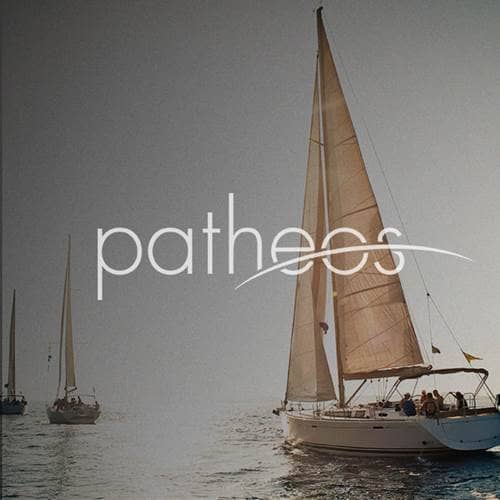- Trending:
- Pope Leo Xiv
- |
- Israel
- |
- Trump
- |
- Social Justice
- |
- Peace
- |
- Love

RELIGION LIBRARY
Taoism
Community Organization
Highly organized communities of lay and clerical participants are not the norm in Taoism today. Notable examples of community structure in Taoism came early, as with the first organized Taoist religious group, the Way of the Celestial Masters. When this group was first established, the state of Sichuan was divided into 24 districts, each of which had 24 officials. All the members were assigned to one of these districts.
Members were also ranked according to a hierarchy. In the lowest rank were the beginners; these were called "demon soldiers." The next level was composed of low-level priests, called "demon clerks." Higher-level priests were "libationers" and the highest-level priests were the "head libationers." "Libationer" (jijiu) was a term taken from the Han bureaucracy, and in fact, the libationers at that time acted as civil as well as religious officials.
One unusual aspect of this early movement was that men and women, Chinese and non-Chinese—including ethnic minorities—had an equal opportunity to advance in the hierarchy.
Each libationer was in charge of an "inn of equity," which was free to all travelers, and included free meals as well. Libationers were also responsible for explaining the Taode jing to members, and they had various roles in periodic rituals. Demon clerks were in charge of reciting prayers for the sick. Because illness was believed to be caused by wrongdoing, the sick person was first told to meditate on his misdeeds. Each household was to have a quiet room for this purpose. The clerk would then write the person's name, a summary of the situation, and a request for forgiveness, which he would then forward to the heavenly officials. Punishments were also meted out. For minor misdeeds, the member might be assigned a task repairing roads between inns.
At the beginning of the tenth month of each year, the membership would gather. All new births, deaths, and marriages were recorded, elements of the religious system would be explained, and each household was expected to contribute five bushels of rice. These were used to finance the inns and other operations of the organization, which was nicknamed "the Five Bushels of Rice sect." There were also gatherings in the first and seventh months to award promotions within the hierarchy.
From the age of 7 children were taught moral rules, and at 8 they received their first register, indicating the name and description of one celestial general whom they were authorized to call on for help. By the age of 20, they would receive a register of ten generals, and the graduated steps would continue, depending on how far one advanced in the hierarchy.
While the early Way of the Celestial Masters sect took on a political role, its leaders did not advocate rebellion. They sometimes served as advisors to rulers, and they also confirmed the right of the emperors to rule. This took place from the 5th to the 12th centuries. For much of its history, most Taoist groups were controlled by the Chinese state. In time, as the Way of the Celestial Masters organization endured the rise and fall of history, its highly ordered community structure gave way to a more informal relationship with local communities.
Shangqing and Lingbao Taoism were originally textually based. Organizational structures that developed later were not central to the sect in the formalized way that they had been for the Celestial Masters organization. As Buddhism became more and more important in China, Taoism reacted by adopting similar structures. Lingbao developed scriptures encouraging monastic living, and there were organized groups of priests and temples in both of these sects.
In 666 C.E., the emperor Gaozong (reign 649-683) ordered that a system of state-sponsored monasteries be built for both Taoism and Buddhism in every prefecture of China. The emperor Xuanzong (reign 713-756), who was a Shangqing initiate, also encouraged and regulated monastic communities and ordered the building of new temples. Despite state support, Taoism had far fewer monasteries than Buddhism, and many that did exist were founded without state permission, in order to avoid strict regulations.
In the 9th century there was a revival of the Way of the Celestial Masters, now usually called Zhengyi, or Orthodox Unity, and it became the most prominent Taoist sect. Zhengyi leaders were married priests who lived at home. By the Yuan dynasty there were thousands of Zhengyi temples serving local communities.
A new 12th-century sect, Quanzhen, or Complete Perfection, was based on a monastic structure. Its early leaders were known for their aesthetic acts. Quanzhen inspired the building of new temples and the institution of pilgrimage sites, and it attracted a large number of lay supporters. Priests were the administrators and occupants of these popular temples and pilgrimage sites.
In the 19th and 20th centuries, during the course of various persecutions, most Taoist temples and monasteries were destroyed or converted to schools, hospitals, or government offices, but there has been a revival of Taoism in China in recent decades. The central monastery of the Quanzhen sect, the White Cloud Temple in Beijing, is the administrative center for all of Taoism, and novice priests of all sects often train there. Generally speaking, Zhengyi dominates in Taiwan and southern China, while Quanzhen is more prevalent in the rest of China. These two Taoist sects, with their differing structures, are currently the most influential sects in modern China.
Study Questions:
1. How does Taoism differ from other religious patriarchies?
2. What is the role of a libationer?
3. How does age influence an individual's connection to Taoism?










